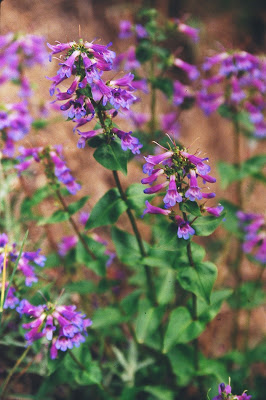We were not, in fact, prepared for the brilliantly colored landscape that awaited us as we rounded the final bend into the Paradise parking lot. At 8000 some feet, Fall colors come earlier to Paradise then at lower elevations. I thought that aside from the temporary displays of seasonal wildflowers, there was nothing else up here but the evergreen alpine firs. Wrong! The alpine blueberries were ablaze in different shades of yellow, red and purple. Mountain Ash (actually a member of the Rose Family, Sorbus acutaria) also turns orange-red, while bearing bright red fruits.
It is the season for fruits. The Mountain Ash fruits were being greedily consumed by chipmunks, birds and other animals. Fireweed and Pasque Flower (Anemone occidentalis) were also shedding their wind-born achenes.
 |
| Pearly Everlasting, Anaphalis margaritacea, sets out a feast of nectar for insects in the Fall, perhaps their last meal before all life goes dormant. |
Surprisingly, there were a few flowers still out. Pearly Everlasting (Anaphalis) was at its peak, and there were a few stragglers of a blue Aster. Both, incidentally are in the Sunflower Family (Asteraceae). Members of this family can go from flower to mature seed in a matter of weeks, sometimes days, so dominate Fall flower displays.
 |
| Much of the Fall color at Paradise comes from the alpine blueberry. |
 |
| The Pasqueflower, Anemone occidentalis, is shedding its tassled achenes, which have been developing all summer. |
 |
| Though called "Mountain Ash," Sorbus acutaria produces little red fruits like Pyracanthus or other members of the Rose Family. True ashes have winged achenes that are dispersed by the wind. |
 |
| The cottony seeds of the Fireweed, Epilobium angustifolium, are being releasted from their capsules into the wind. |

























































